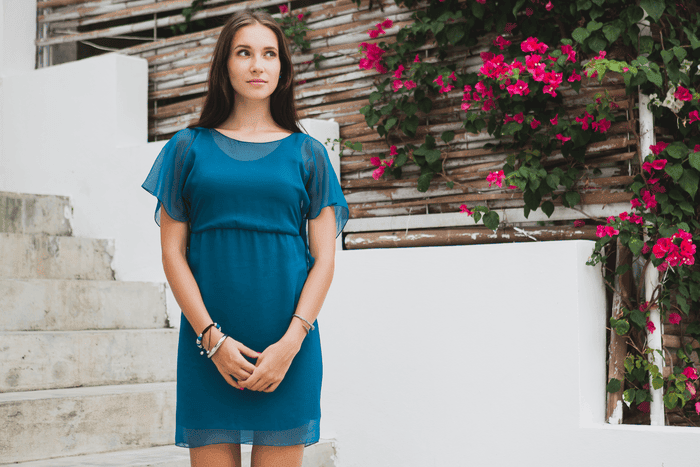In today’s industrial and commercial sectors, material selection plays a crucial role in determining product quality, performance, and longevity. One such material that has proven its worth across multiple industries is HDPE woven fabric. Known for its durability, resistance to wear and tear, and wide range of applications, HDPE woven fabric is a cost-effective solution for packaging, construction, agriculture, and more.
This blog takes an in-depth look at what HDPE woven fabric is, its manufacturing process, benefits, and applications, along with why it has become a popular choice in modern industries.
What is HDPE Woven Fabric?
HDPE woven fabric is made from High-Density Polyethylene (HDPE), a thermoplastic polymer produced from petroleum. The fabric is created by weaving HDPE tapes or threads in a crisscross pattern, which makes it exceptionally strong and tear-resistant. Unlike traditional fabrics, this material is lightweight yet tough, offering high tensile strength and excellent resistance to moisture, chemicals, and environmental factors.
The woven structure of the fabric ensures flexibility, making it suitable for covering, packaging, and industrial applications. Depending on the need, HDPE woven fabric can be laminated or unlaminated, coated for water resistance, or customized for UV stability.
The Manufacturing Process
The production of HDPE woven fabric involves several key steps:
- Extrusion: HDPE granules are melted and extruded into thin flat tapes.
- Stretching: These tapes are stretched to increase strength and durability.
- Weaving: The tapes are woven together using circular or flat weaving machines.
- Lamination (Optional): A layer of LDPE (Low-Density Polyethylene) is laminated to make the fabric waterproof.
- Finishing and Cutting: The fabric is cut into required sizes and shapes for packaging or industrial use.
This systematic process ensures consistency, high performance, and adaptability for various industries.
Key Features of HDPE Woven Fabric
HDPE woven fabric stands out due to its remarkable properties:
- High Tensile Strength: Strong and durable, capable of withstanding heavy loads.
- Lightweight: Easy to transport and handle, reducing overall logistics cost.
- Moisture Resistant: Offers protection against water, dampness, and humidity.
- UV Resistant: Special additives can protect against sun damage.
- Tear and Puncture Resistant: Withstands rough handling and external pressures.
- Chemical Resistant: Safe for storing and transporting fertilizers, chemicals, and industrial goods.
- Recyclable: Environmentally friendly compared to many single-use plastics.
Advantages of HDPE Woven Fabric
- Cost-Effective: Provides excellent strength-to-weight ratio at an affordable price.
- Durable: Long-lasting and resistant to environmental stress.
- Customizable: Can be produced in different colors, thicknesses, and finishes.
- Reusable: Multiple uses reduce overall consumption and waste.
- Eco-Friendly Option: Being recyclable, it contributes to sustainable practices.
Applications of HDPE Woven Fabric
The versatility of HDPE woven fabric makes it essential across many sectors:
1. Packaging Industry
HDPE woven fabric is widely used in packaging because of its strength and durability. It is commonly converted into woven sacks and bags for storing grains, sugar, rice, flour, fertilizer, and other bulk materials. These bags protect the contents from moisture and external damage during transportation.
2. Construction Industry
In construction, HDPE woven fabric is used as tarpaulin covers, scaffolding nets, and temporary roofing. It provides excellent protection against dust, rain, and UV rays. It is also used for cement and sand packaging due to its strength and moisture resistance.
3. Agriculture Sector
Farmers rely on HDPE woven fabric for crop covers, pond lining, and shade nets. It helps protect crops from weather changes, prevents water seepage, and increases productivity by maintaining soil and crop health.
4. Transportation and Logistics
HDPE woven fabric is ideal for truck covers, container liners, and cargo wrapping. Its tear-resistant and waterproof qualities ensure safe and secure transport of goods.
5. Geotextiles and Landscaping
The fabric is used in geotextiles for road construction, erosion control, and landfills. Its ability to provide soil stability and prevent seepage makes it invaluable for infrastructure projects.
6. Household and Everyday Uses
From shopping bags to furniture covers and mats, HDPE woven fabric finds everyday applications due to its flexibility and practicality.
Why HDPE Woven Fabric is Preferred Over Alternatives
When compared to jute, paper, or cotton fabric, HDPE woven fabric offers several distinct advantages:
- It is more durable and resistant to wear and tear.
- Unlike paper bags, it doesn’t get damaged in moisture.
- It is lighter and stronger than jute, making it easier to transport.
- It can be produced in large quantities at a lower cost.
These qualities make it a highly practical material for industries that prioritize strength, durability, and efficiency.
Sustainability and Environmental Impact
One of the major concerns about plastics is their environmental impact. However, HDPE woven fabric stands out because it is recyclable and reusable. Industries are now promoting green packaging solutions, and HDPE woven products align with this trend by reducing single-use plastic dependency.
Moreover, manufacturers are developing biodegradable coatings and adopting eco-friendly production methods to minimize environmental harm. With responsible use and recycling, HDPE woven fabric can contribute to sustainable industrial growth.
Final Thoughts
HDPE woven fabric is more than just a packaging material it is a versatile solution that has transformed industries ranging from agriculture to construction. Its strength, cost-effectiveness, and adaptability make it indispensable in today’s world.



